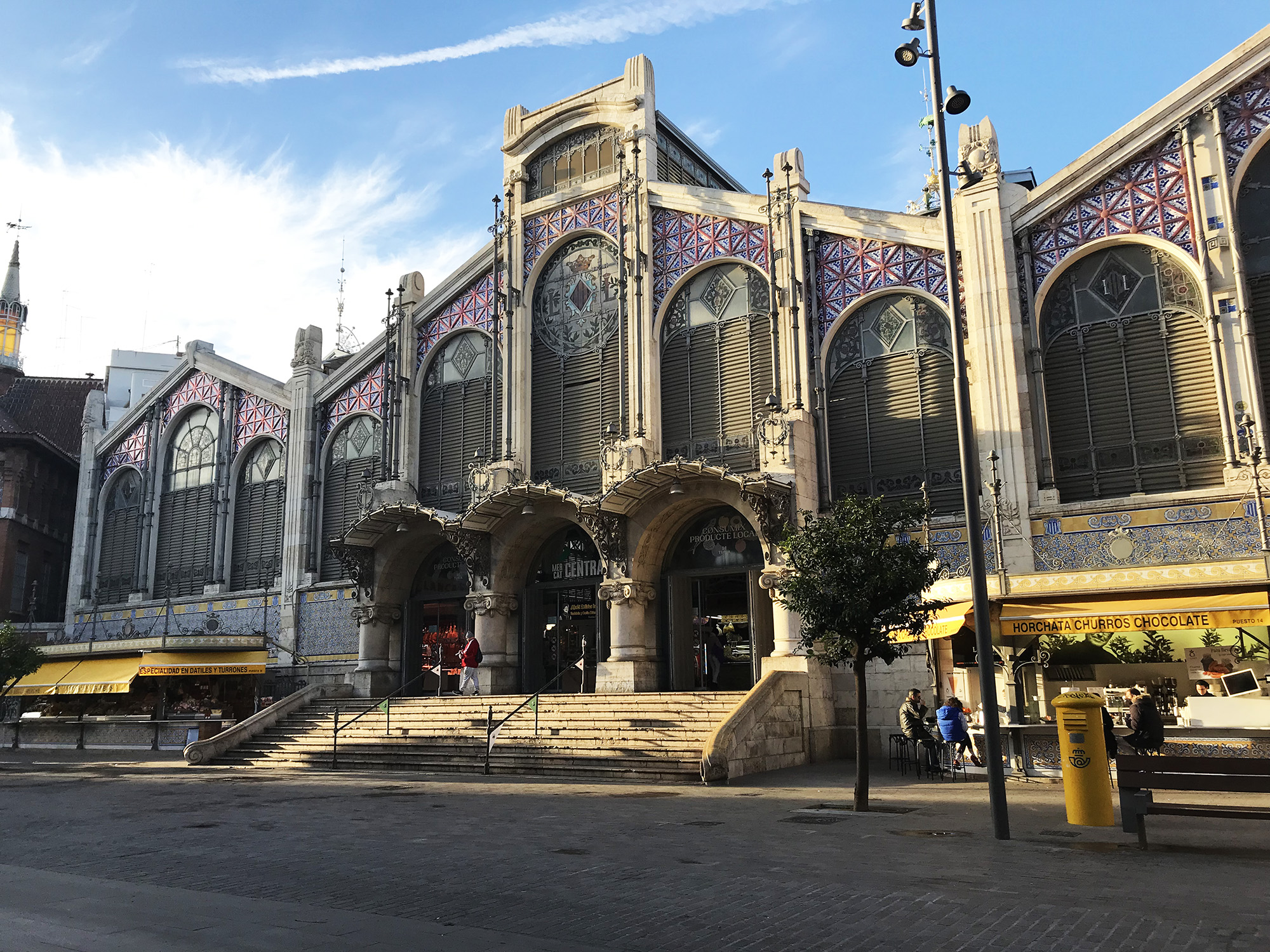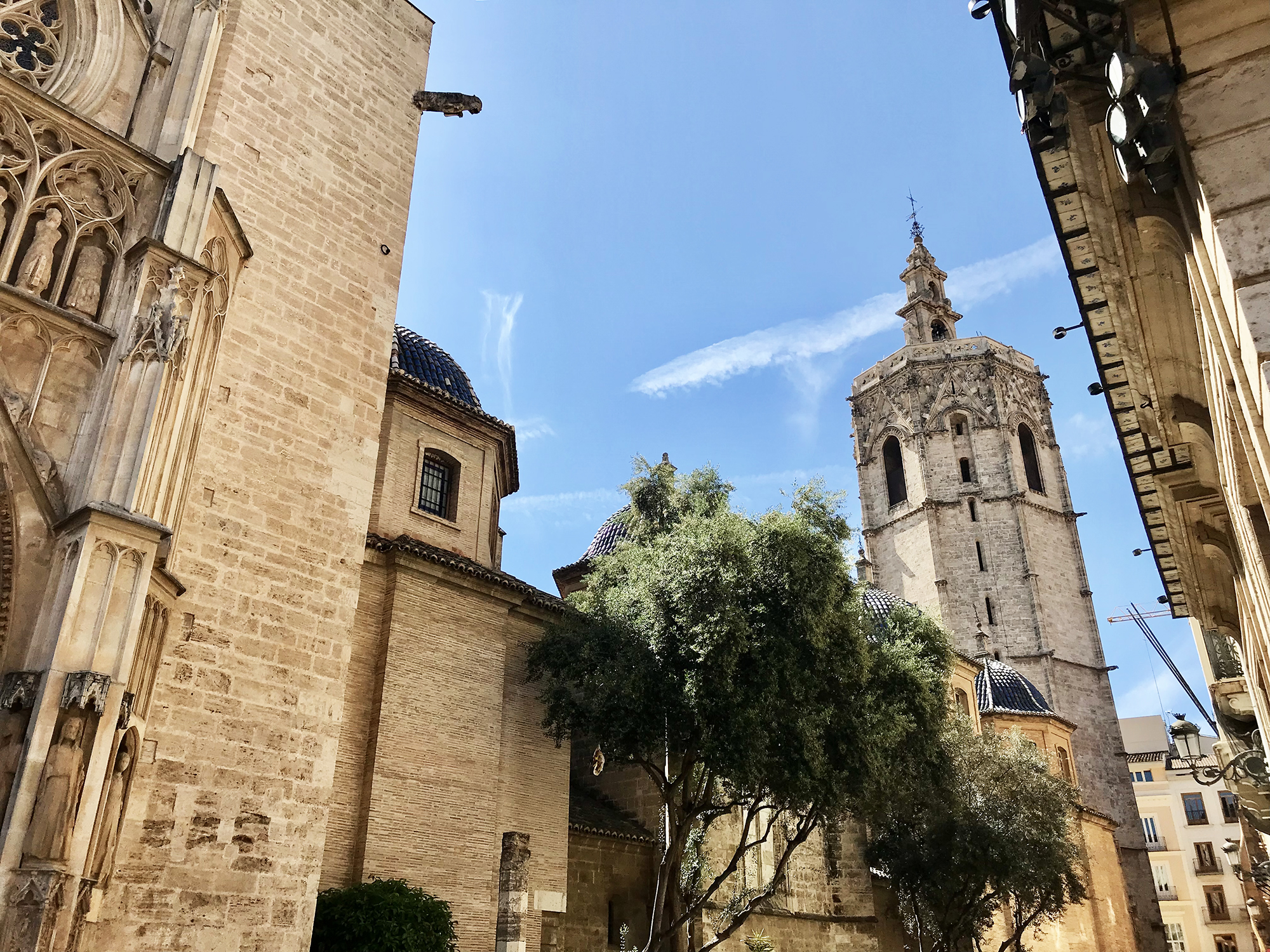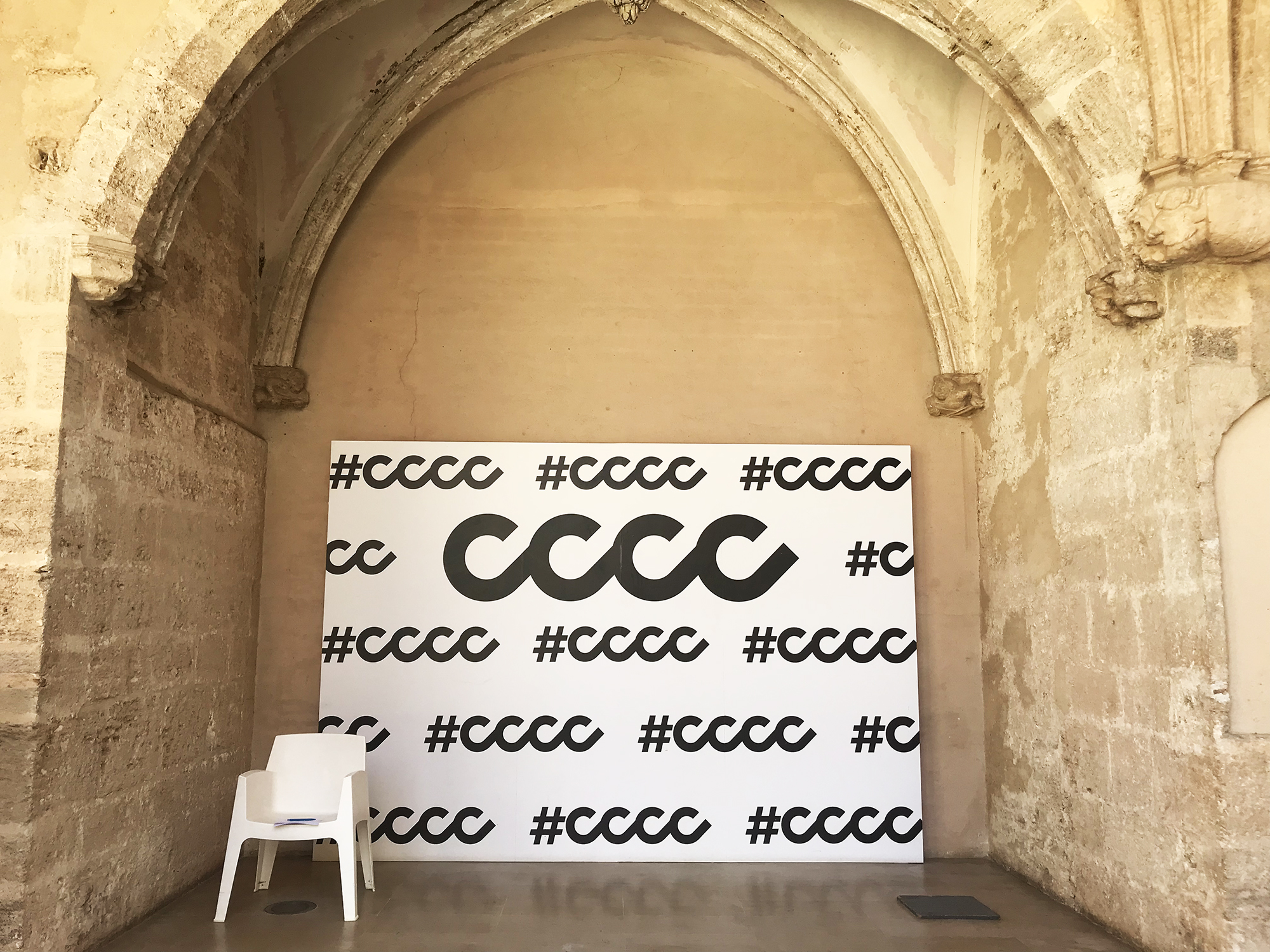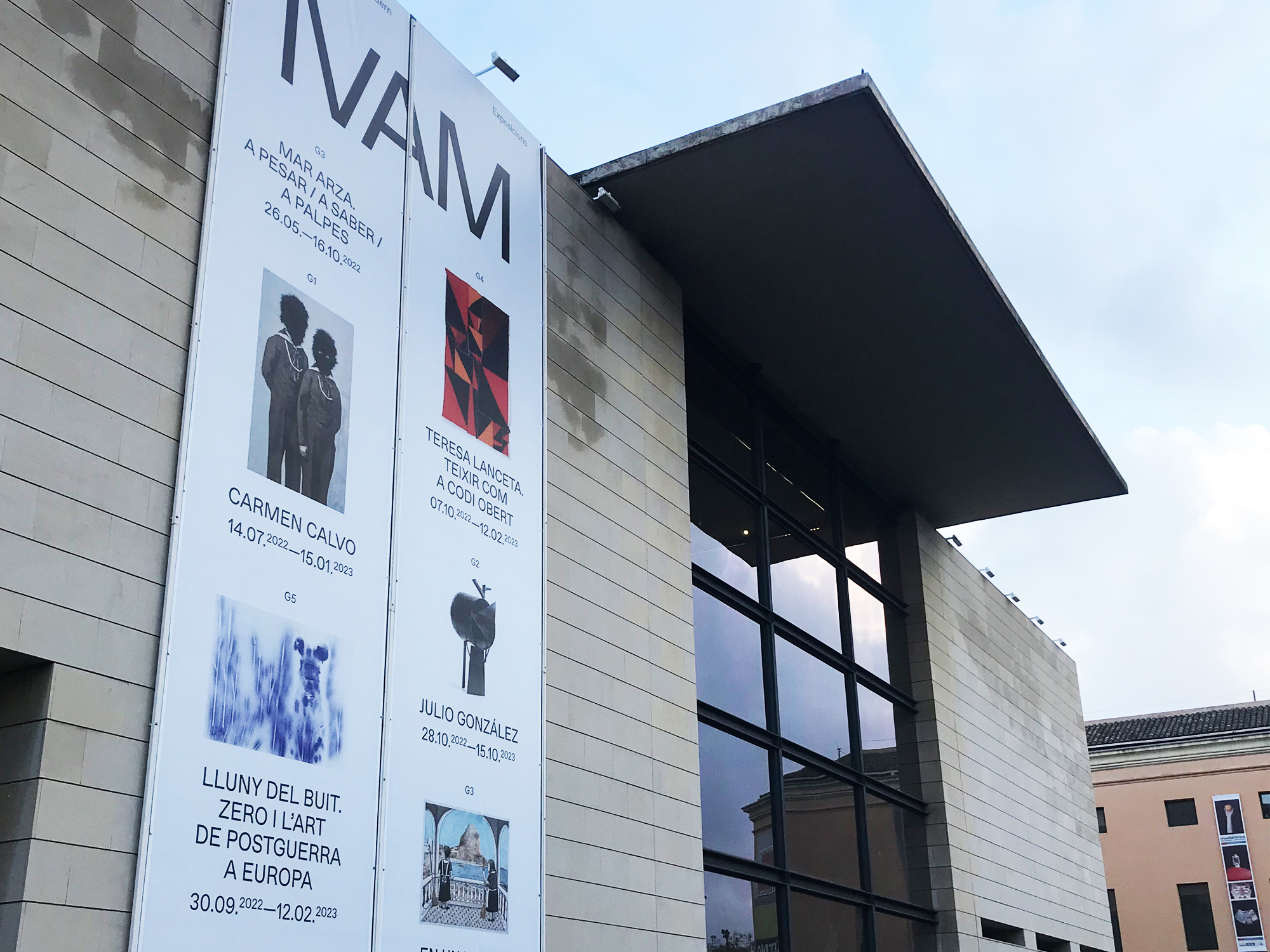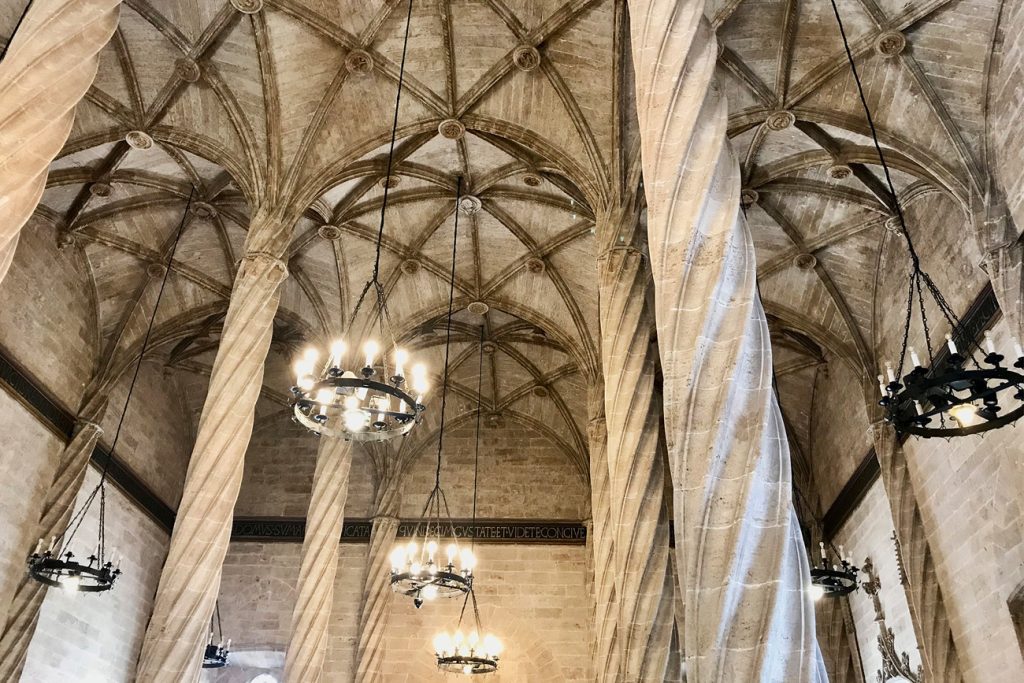
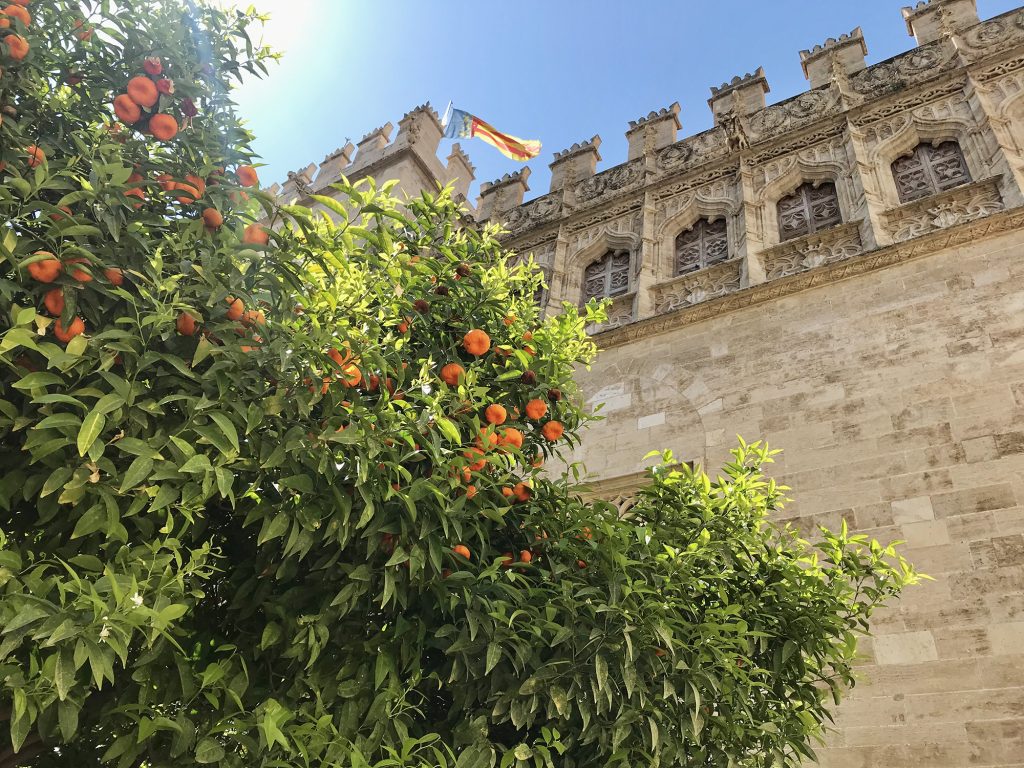
La Llotja de la Seda
The building was home of the Silk Exchange of House of Merchants, a chapel and the Sea Consulate of Valencia. It is an emblematic building of the Valencian Golden Age (15th century) and represents the commercial revolution during the late Middle Ages, the social development and prestige achieved by the Valencian burgeoisie.
The building is a symbol of the power of the city to attract merchants in difficult times caused by the discovery of America (trading was shifting from the Mediterranean to the Atlantic).
It is a masterpiece of Valencian civil Gothic architecture located in the historic city center next to Mercado Central.
They started to build it in 1470 and completed in 1533. The commercial markets in the Crown of Aragon were built following the same scheme: a rectangular room supported by columns. The Valencian building was following the Lonja de Barcelona and the Lonja de Palma.
The building has four parts: the Tower, which was a dungeon for silk thieves and dishonest merchans, the Room of the Consulate of the Sea, the Patio de los Naranjos and the Column Hall.
Location
- C/ de la Llotja, 2, 46001 València, Valencia
Interesting facts
THE BUILDING
- It is a UNESCO World Heritage Site and one of the most important examples of late Gothic civil architecture in Europe.
- It was built between 1482 and 1533, and its construction was funded by the silk merchants of Valencia.
- The name “Lonja de la Seda” means “Silk Exchange” in Spanish, and the building was originally used for trading in silk.
- The Sala de Contratación (Contract or Trading Hall) is the most impressive part of the building. It is a large, vaulted hall with eight massive columns that support the roof.
- The Taula de Canvis, a financial institution that was a forerunner to public banks, was located in the Sala de Contratación.
- The building also includes a Torreón (tower) and a Patio de Naranjos (orange tree courtyard).
- La Lonja de la Seda is still used today for cultural events and exhibitions.
- The building is made of Valencian limestone, which is known for its durability.
- The Sala de Contratación is 52 meters long, 28 meters wide, and 17.4 meters high.
- The Taula de Canvis was founded in 1407 and was one of the most important financial institutions in Europe during the 15th and 16th centuries.
- The orange tree courtyard was planted in 1594 and is home to over 100 orange trees



